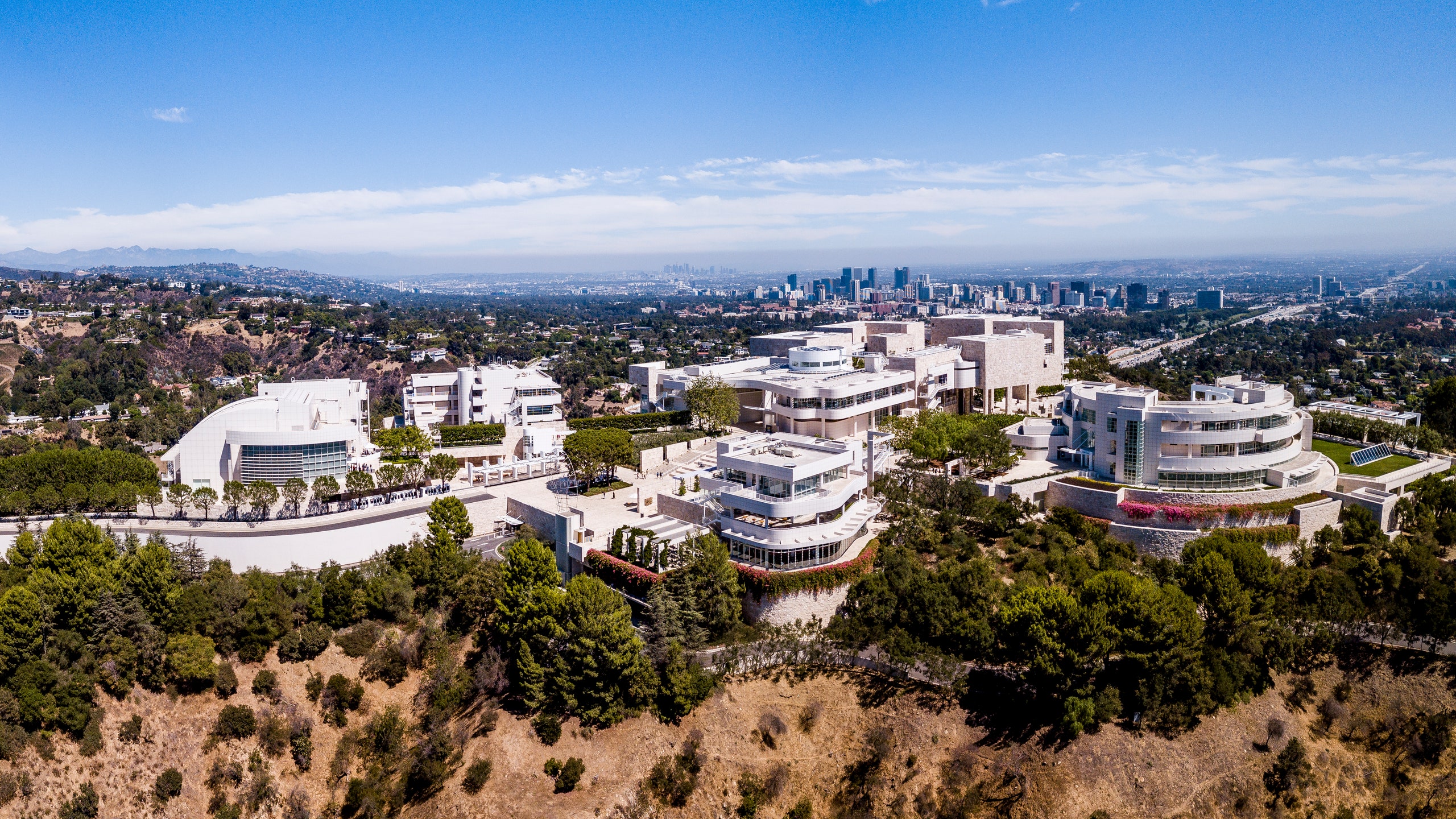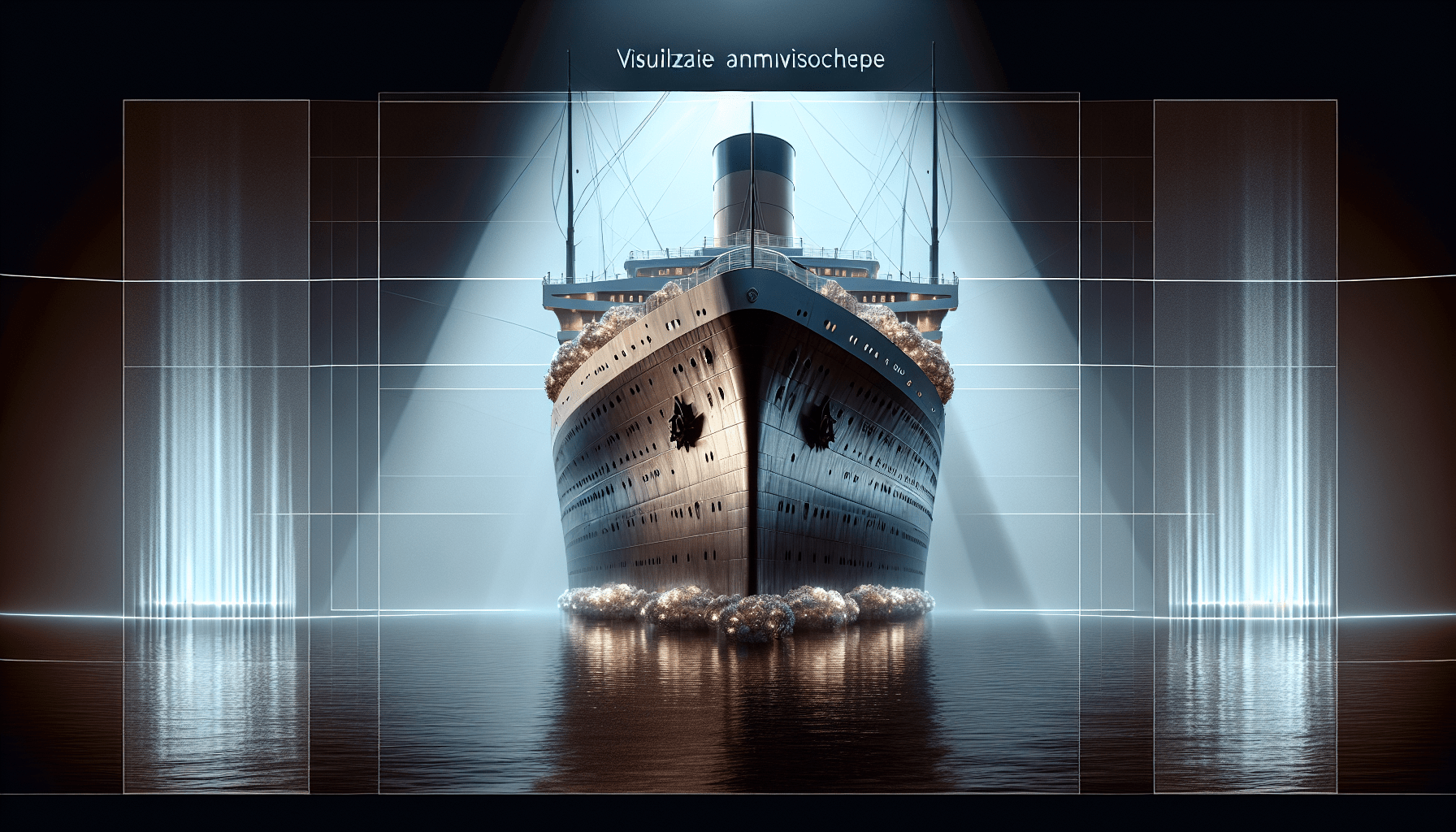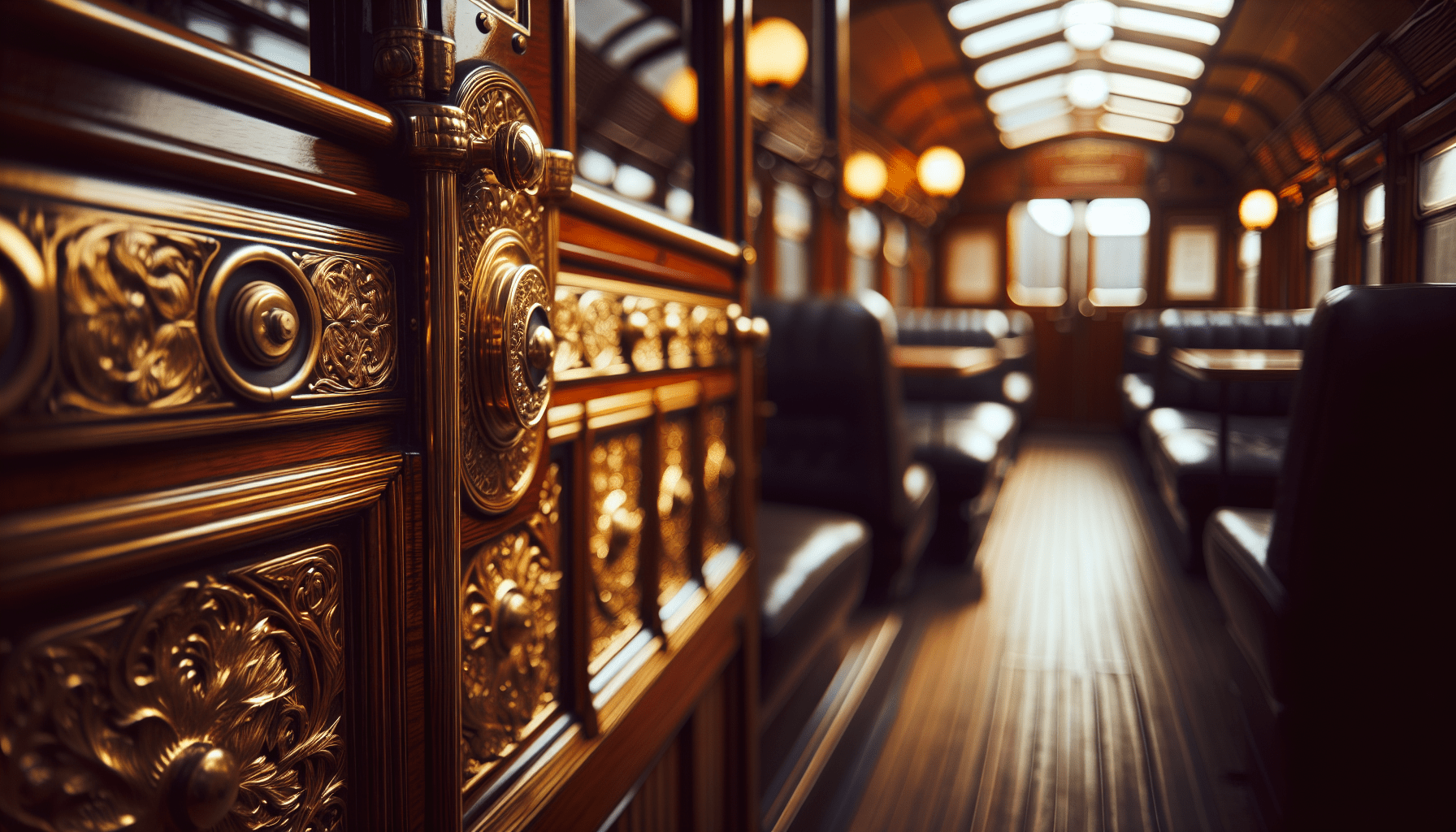TSA Approved Cable Luggage Locks, Re-settable Combination with Alloy Body
$23.95 (as of April 24, 2025 06:56 GMT +00:00 - More info)Los Angeles, a city known for its glitz and glamour, offers a plethora of sightseeing opportunities and places to explore. Among these is The Getty Center, a renowned institution that houses an impressive collection of artworks and showcases stunning architecture. With its breathtaking views of the city and carefully curated exhibitions, The Getty Center stands as a must-visit destination for art enthusiasts and tourists alike. Whether you’re looking to immerse yourself in art, take a guided tour, or simply indulge in the beauty of its surroundings, The Getty Center promises to provide a memorable experience for all.
History of the Getty Center
Construction and opening
The Getty Center, located in Los Angeles, California, is a world-renowned cultural institution that houses an extensive collection of art and hosts various exhibitions. The construction of the Getty Center was initiated in 1984 and took over 13 years to complete. The project was fueled by the vision of J. Paul Getty, an American philanthropist and art collector.
The center was designed to be a showcase of modern architecture, art, and culture. The construction process faced numerous challenges, including difficult terrain and strict building regulations due to its location in the Santa Monica Mountains. Despite these obstacles, the Getty Center was finally opened to the public on December 16, 1997, with much anticipation and excitement.
Architecture and design
One of the most striking features of the Getty Center is its unique architecture and innovative design. Designed by Richard Meier, a renowned architect, the Getty Center stands as an impressive work of architectural art itself. The buildings are made of travertine stone, which gives them a sense of timeless elegance and grandeur.
The center is spread across 110 acres and was deliberately designed to blend with the surrounding natural landscape. The buildings are strategically placed to maximize the breathtaking views of Los Angeles, the Pacific Ocean, and the Santa Monica Mountains. The overall design emphasizes light and space, with large windows and skylights allowing natural light to flood the interiors.
Expansion and renovations
Over the years, the Getty Center has undergone several expansions and renovations to accommodate its growing collection and enhance visitor experiences. In 2001, a new building, the North Pavilion, was added to house temporary exhibitions and provide additional gallery space. This expansion allowed for the display of more artworks and offered visitors a diverse range of exhibitions throughout the year.
In 2018, the Getty Center underwent a major renovation to improve accessibility and enhance the visitor experience. The project included the addition of new gardens, improved signage, and upgrades to the lighting and audiovisual systems. These renovations aimed to create a more welcoming and inclusive environment for visitors of all backgrounds.
Art and Exhibitions
The Getty Museum
The Getty Museum, housed within the Getty Center, is renowned for its exceptional collection of European paintings, sculptures, decorative arts, and illuminated manuscripts. It showcases works from various periods and genres, spanning from the Middle Ages to the present day. The museum’s collection includes masterpieces by renowned artists such as Van Gogh, Rembrandt, Monet, and Renoir.
Collections
In addition to the European collection, the Getty Museum also houses collections of American photography, Greek and Roman antiquities, and European drawings. The American photography collection features works by iconic photographers like Ansel Adams and Diane Arbus, providing visitors with a comprehensive view of the evolution of photography as an art form.
The Greek and Roman antiquities collection boasts an impressive array of sculptures, pottery, and other artifacts from ancient civilizations. Visitors can marvel at the intricately carved marbles, delicate vases, and exquisite jewelry that offer a glimpse into the rich history of these ancient cultures.
Temporary exhibitions
The Getty Museum regularly organizes temporary exhibitions to complement its permanent collection. These exhibitions showcase works from renowned artists and focus on various themes and artistic movements. Visitors have the opportunity to explore diverse art forms, ranging from photography and sculpture to contemporary installations.
The temporary exhibitions at the Getty Museum provide an ever-changing and dynamic experience for visitors, ensuring that there is always something new and exciting to discover.
Gardens and Landscapes
Central Garden
The Central Garden at the Getty Center is a masterpiece in itself and serves as a tranquil oasis amidst the bustling city. Designed by artist Robert Irwin, the garden is a living work of art that seamlessly integrates nature and artistic expression. It features a variety of plants, including trees, shrubs, and flowers, intricately arranged to create a visually stunning and harmonious environment.
Walking through the Central Garden is a sensory experience. The gentle sound of water cascading over stone and the fragrance of blooming flowers fill the air, creating a serene atmosphere. Visitors can meander along the winding paths, admire the sculptures dispersed throughout the garden, or simply find a quiet spot to sit and immerse themselves in the beauty of nature.
Cactus Garden
Adjacent to the Central Garden is the Cactus Garden, a captivating landscape that showcases a diverse collection of cacti and succulents. Designed by artist and landscape architect Lori Olin, this garden highlights the beauty and adaptability of desert plants. Lush with a variety of cacti species, the garden exudes a sense of tranquility and resilience.
Walking through the Cactus Garden offers a unique opportunity to observe and appreciate the intricate textures and unique forms of cacti. The garden’s design takes visitors on a journey, showcasing different varieties of cacti from various regions across the world. It serves as a reminder of the incredible diversity of plant life and the importance of conservation.
Sculpture Gardens
In addition to the Central Garden and the Cactus Garden, the Getty Center also features several sculpture gardens that further enhance the artistic and natural beauty of the surroundings. These gardens display a range of sculptures, both modern and classical, strategically placed to interact with the landscape and the architecture.
The sculpture gardens provide visitors with the chance to engage with art in an outdoor setting, creating a dynamic and interactive experience. Each sculpture tells its own story, inviting visitors to interpret and appreciate the artist’s vision. The gardens serve as contemplative spaces where visitors can pause and reflect on the relationship between art, nature, and the human experience.
Getty Center Facilities
Visitor Center
The Getty Center offers a state-of-the-art Visitor Center that serves as a welcoming hub for visitors. The Visitor Center provides information about the different facilities and amenities available at the center, including maps, brochures, and multimedia displays.
Knowledgeable staff members are available to assist visitors and answer any questions they may have. Whether it’s finding the location of a particular artwork or understanding the history and significance of the Getty Center, the Visitor Center ensures that visitors have all the necessary resources to make the most of their visit.
Education Center
The Getty Center’s Education Center is a hub for educational programs, workshops, and interactive experiences aimed at engaging visitors of all ages in the world of art. The center offers a wide range of activities, including art-making sessions, guided tours, lectures, and demonstrations.
These programs are designed to foster creativity, critical thinking, and a deeper understanding and appreciation of art and its importance in society. The Education Center provides opportunities for both individuals and groups to immerse themselves in various art forms and explore their own artistic potential.
Libraries and Research Centers
The Getty Center is also home to several libraries and research centers that cater to scholars, researchers, and art enthusiasts. The Research Library houses an extensive collection of books, manuscripts, and periodicals related to art history and cultural studies, making it a valuable resource for academic research.
The Getty Research Institute offers scholars and researchers the opportunity to delve into various aspects of art and culture through its vast collection of archives, photographs, and special collections. These research facilities provide a conducive environment for knowledge creation and facilitate academic exchange.
Getty Conservation Institute
Conservation research
The Getty Conservation Institute plays a vital role in the preservation and conservation of cultural heritage. Through research, field projects, and collaborations, the institute aims to develop innovative solutions and strategies to protect and maintain artworks and historic sites.
The institute’s conservation research initiatives focus on a wide range of topics, including the study of materials and techniques, climate change and its impact on cultural heritage, and the development of sustainable conservation practices. By sharing their findings and expertise with the global conservation community, the Getty Conservation Institute contributes to the preservation of cultural heritage worldwide.
Scientific tools and techniques
The Getty Conservation Institute harnesses cutting-edge scientific tools and techniques to analyze and document artwork and cultural artifacts. These tools include imaging technologies, spectroscopy, and microscopy, which allow conservators to examine artworks at a microscopic level and uncover hidden details.
By combining scientific analysis with traditional conservation practices, the Getty Conservation Institute ensures that artworks are preserved in their authentic form while also providing insights into the artistic process and historical context. The use of these scientific tools and techniques contributes to a deeper understanding and appreciation of art and cultural heritage.
Getty Villa
Ancient Roman-inspired architecture
The Getty Villa, located in Pacific Palisades, is an architectural gem designed to resemble an ancient Roman villa. Inspired by the Villa dei Papiri in Herculaneum, Italy, the Getty Villa showcases classical Mediterranean architecture and embodies the spirit of ancient Rome.
The villa’s architecture reflects the grandeur and grace of Roman design, with its colonnades, courtyards, and beautifully ornamented interiors. Visitors can wander through the recreated Roman rooms and gardens, experiencing the opulence and elegance of ancient Roman life.
Recreated Roman artifacts
The Getty Villa’s collection focuses on Greek, Roman, and Etruscan antiquities, showcasing remarkable works of art and everyday objects from these ancient civilizations. The collection includes sculptures, pottery, jewelry, and other artifacts that offer insights into the artistic and cultural achievements of the past.
Visitors can explore the galleries and marvel at the intricately carved statues, vibrant mosaics, and delicate vases on display. The Getty Villa provides a unique opportunity to immerse oneself in the art and culture of ancient times, transporting visitors back in time to the world of the Romans and Greeks.
Museum and gardens
In addition to its impressive collection, the Getty Villa also features beautiful gardens that recreate the ambiance and aesthetics of ancient Roman gardens. These gardens showcase a wide variety of Mediterranean plants, including fragrant herbs, colorful flowers, and gracefully pruned trees.
The gardens provide a serene and picturesque setting that complements the artworks displayed in the museum. Visitors can take leisurely strolls, relax in shaded alcoves, or sit by the reflecting pool, immersing themselves in the tranquility and beauty of the surroundings.
Visitor Information
Hours of operation
The Getty Center is open to the public from Tuesday to Sunday, with varying opening and closing times. Visitors are advised to check the official website for the most up-to-date information regarding the operating hours.
Tickets and admission
Admission to the Getty Center is free; however, parking does incur a fee. Reservations are required for parking and can be made online or by phone. Timed entry tickets are also available to manage visitor flow and ensure a comfortable experience for all.
Getting to the Getty Center
The Getty Center is easily accessible by car, public transportation, or shuttle. Located off the 405 freeway, the center provides ample parking facilities for visitors. Additionally, regular bus services and shuttles are available from various locations in Los Angeles, providing convenient transportation options for those without private vehicles.
Dining and Shopping
The Restaurant
The Getty Center offers an exquisite dining experience at its on-site restaurant. Located in a stunning setting with panoramic views, The Restaurant provides visitors with a delightful culinary journey. The menu showcases seasonal and locally-sourced ingredients, offering a range of delectable dishes that cater to various dietary preferences.
Cafés and snack bars
For a more casual dining experience, the Getty Center also has several cafés and snack bars scattered throughout the premises. These cafés offer a selection of light meals, snacks, and beverages, providing visitors with a convenient option to refuel and relax during their visit.
The Getty Store
The Getty Store is a treasure trove for art enthusiasts and gift shoppers. Located in the heart of the Getty Center, the store offers a wide range of unique and high-quality products inspired by the museum’s collection and exhibitions. From books and prints to jewelry and home decor, the store has something for everyone, making it the perfect place to find a memorable keepsake or a special gift.
Special Events and Programs
Concerts and performances
The Getty Center hosts a variety of special events and programs throughout the year, including concerts and performances. These events showcase a diverse range of musical genres and artistic performances, providing visitors with a chance to enjoy live music in a unique and inspiring setting.
From classical orchestral performances to contemporary jazz concerts, the Getty Center’s events offer a rich and engaging experience that combines art, music, and culture.
Lectures and discussions
The Getty Center regularly organizes lectures, panel discussions, and talks by renowned artists, scholars, and experts in the field of art and culture. These events provide an opportunity to deepen one’s understanding of various artistic practices, historical contexts, and cultural phenomena.
The lectures and discussions challenge visitors to think critically, encouraging dialogue and the exchange of ideas. Whether it’s a conversation about the relevance of old master paintings in the digital age or a lecture on the influence of ancient civilizations on contemporary art, these events offer intellectual stimulation and thought-provoking insights.
Family programs
The Getty Center’s family programs are designed to engage and inspire younger visitors and their families. These programs include interactive workshops, storytelling sessions, and hands-on art activities, encouraging children to explore their creativity and develop an appreciation for art at an early age.
The family programs provide an inclusive and welcoming environment where children can embark on a creative journey, learn about different art forms, and discover their own artistic potential. These programs aim to nurture a lifelong love of art and culture in the next generation.
Accessibility and Amenities
Accessibility services
The Getty Center is committed to ensuring accessibility for all visitors. The center offers a range of services and amenities to accommodate individuals with disabilities, including accessible parking, ramps, and elevators. Wheelchairs and strollers are also available for loan, ensuring that everyone can navigate the center with ease.
Additionally, accessible restrooms and designated seating areas are conveniently provided throughout the complex. The Getty Center strives to create an inclusive environment where everyone can fully enjoy the art, architecture, and gardens.
Guided tours
To enhance the visitor experience, the Getty Center offers guided tours led by knowledgeable docents. These tours provide insightful commentary, anecdotes, and historical context, allowing visitors to gain a deeper understanding of the artworks and the center’s architecture.
The guided tours cater to different interests and age groups, ensuring that visitors can tailor their experience to their preferences. Whether it’s a general highlights tour or a thematic exploration of a particular collection, the guided tours add value and enrich the overall visit.
Picnic areas and facilities
For those who prefer to bring their own meals, the Getty Center provides designated picnic areas where visitors can relax and enjoy a meal amidst the beautiful surroundings. These picnic areas are equipped with tables, chairs, and shaded areas, making them an ideal spot to unwind and recharge.
In addition to the picnic areas, the Getty Center also offers drinking fountains, restrooms, and other facilities to ensure visitors have a comfortable and enjoyable experience throughout their visit.
In conclusion, the Getty Center offers a comprehensive experience for art and culture enthusiasts. From its stunning architecture to its world-class collections, the Getty Center provides an immersive journey into the world of art and its preservation. The tranquil gardens, engaging programs, and inclusive amenities make it a must-visit destination for locals and tourists alike. Whether you are interested in ancient civilizations, contemporary art, or simply seeking a serene escape from the bustling city, the Getty Center has something to offer for everyone.
Looking for Sightseeing Tours?








